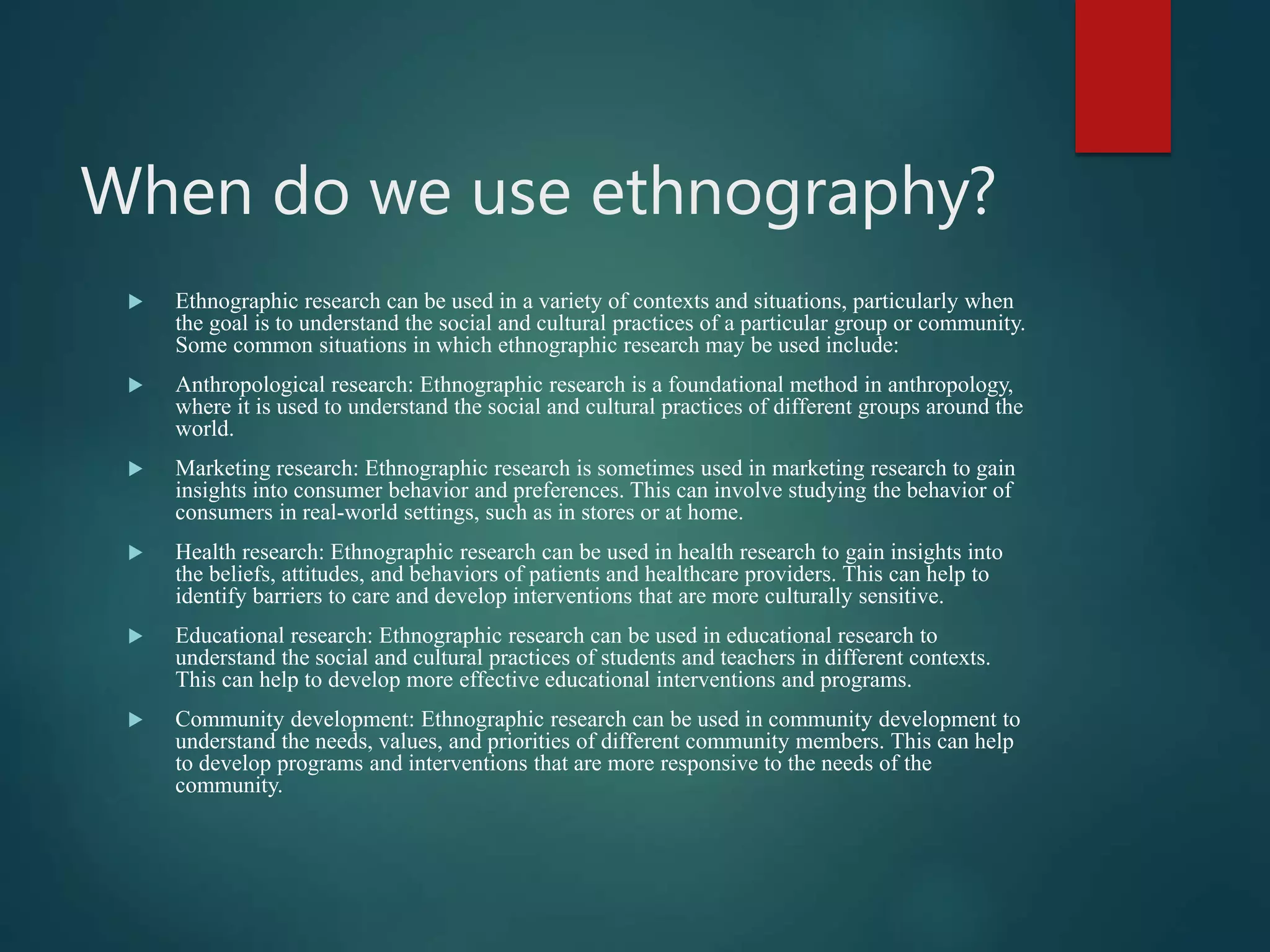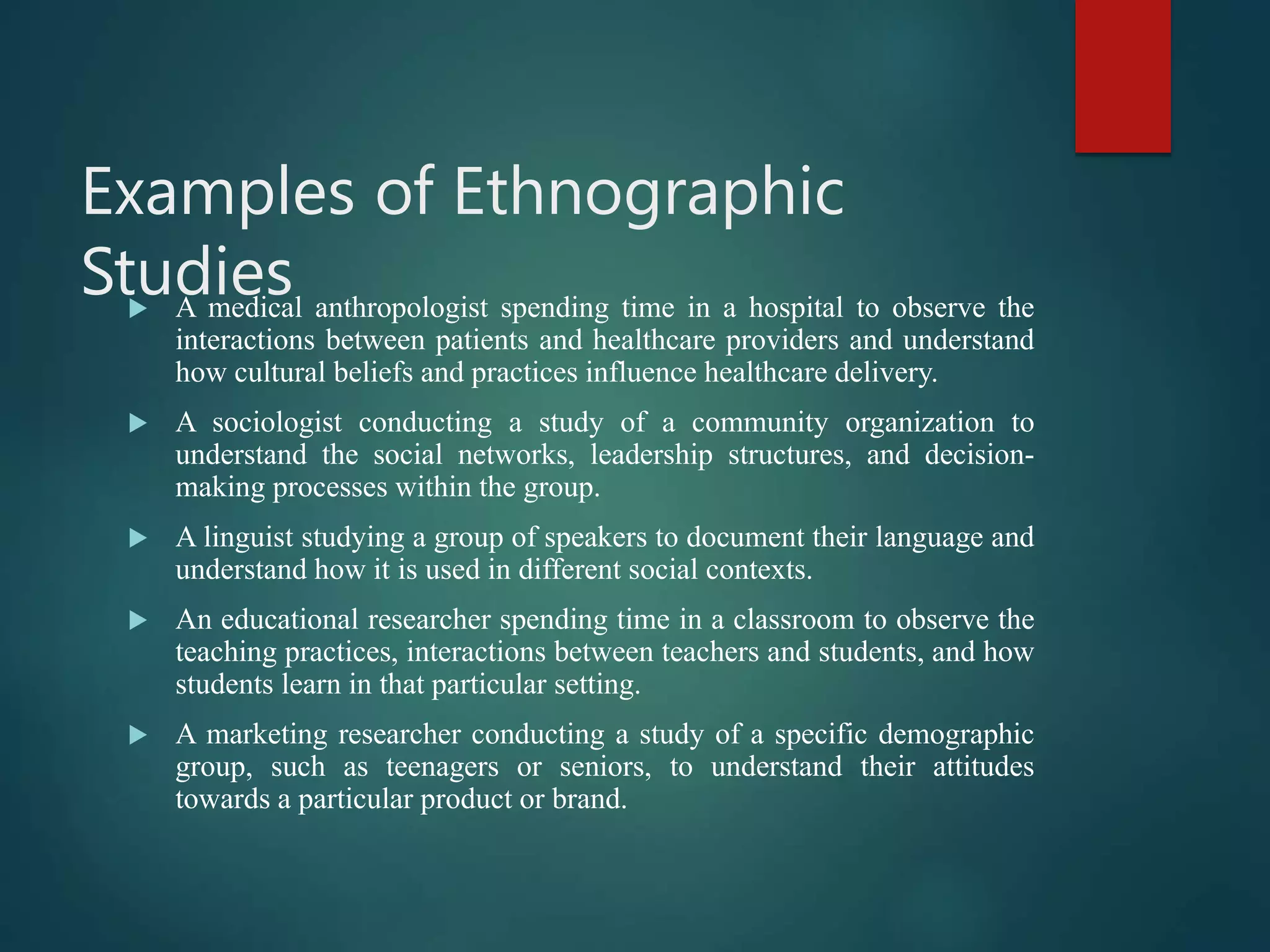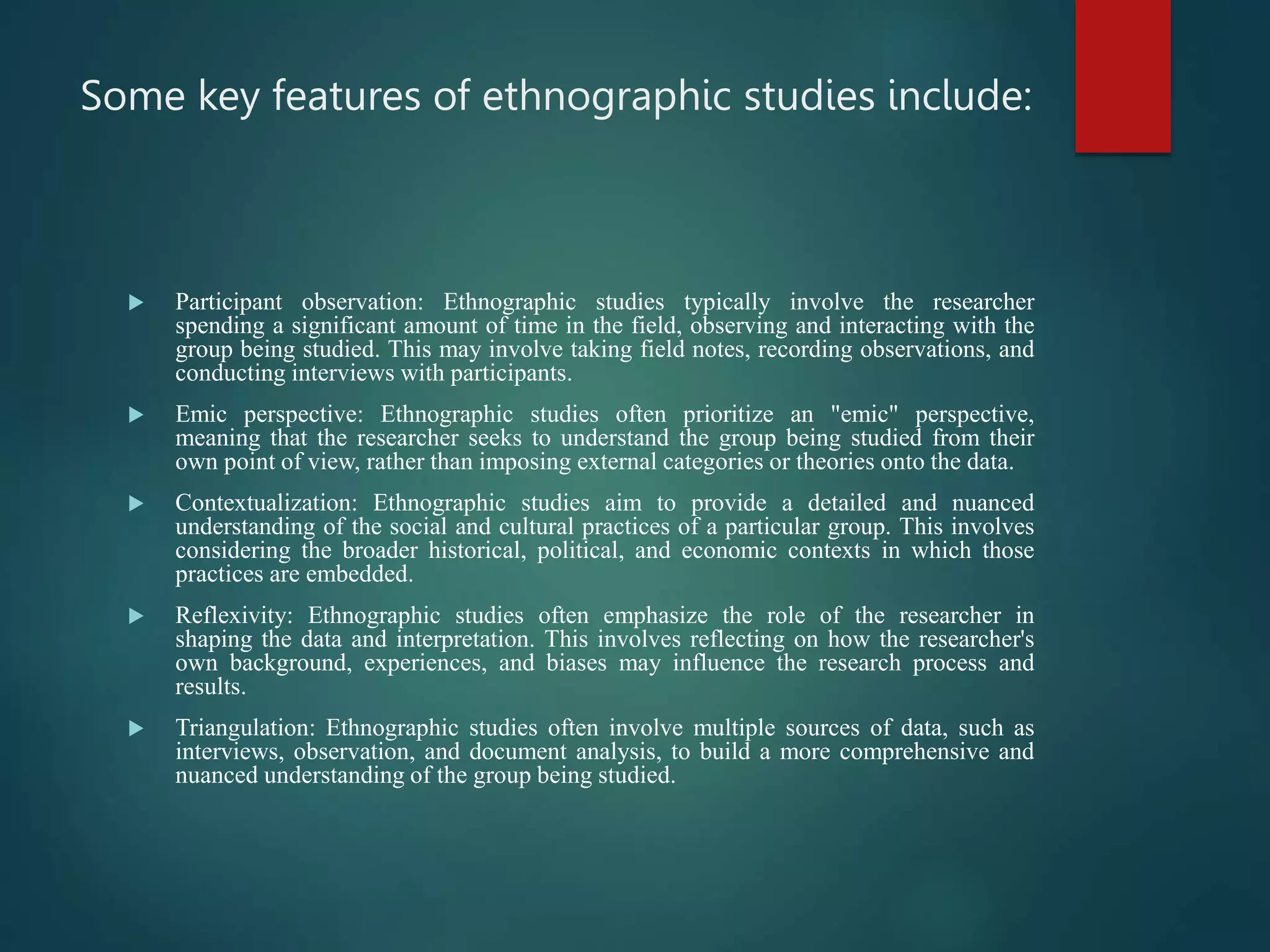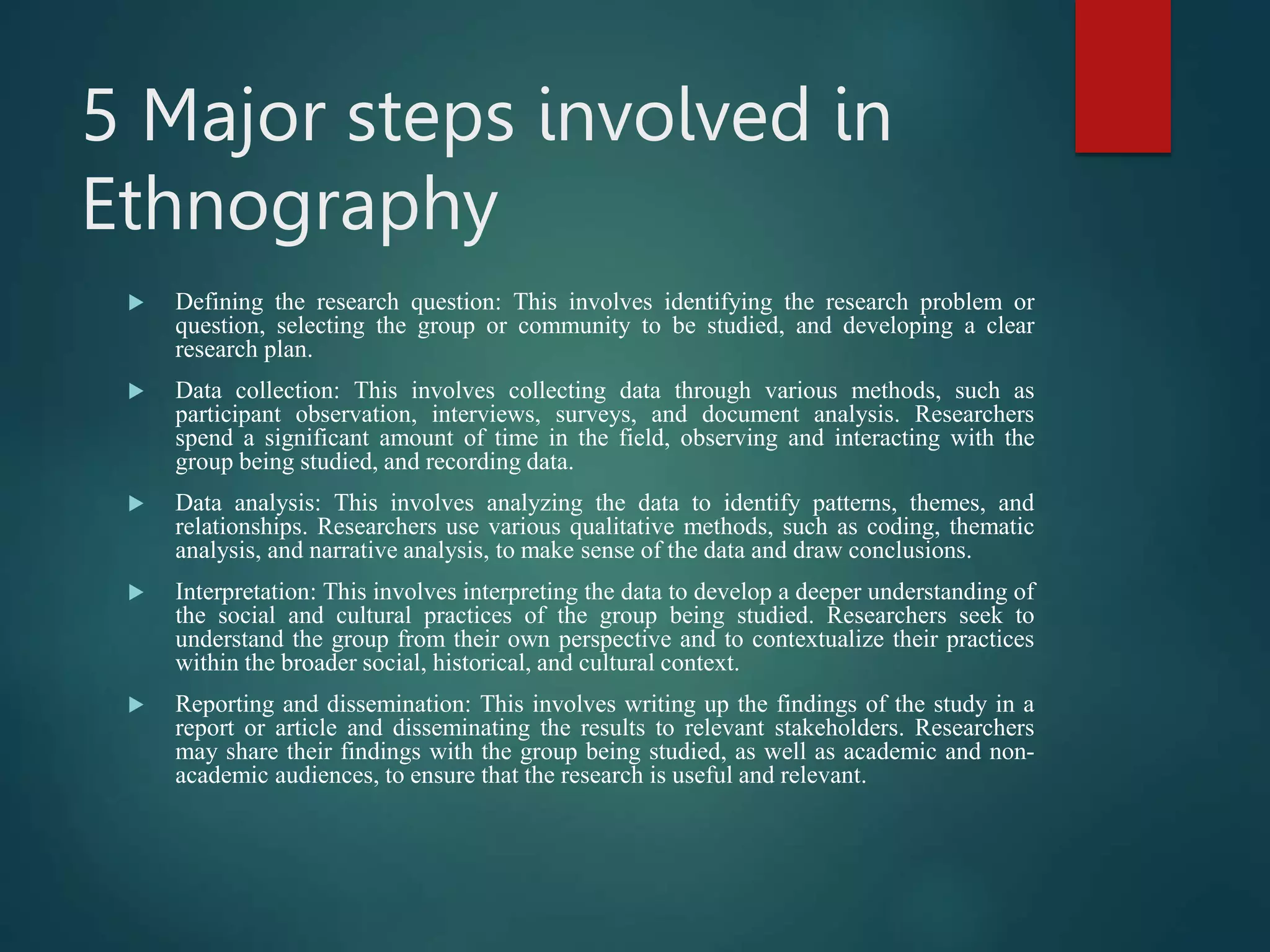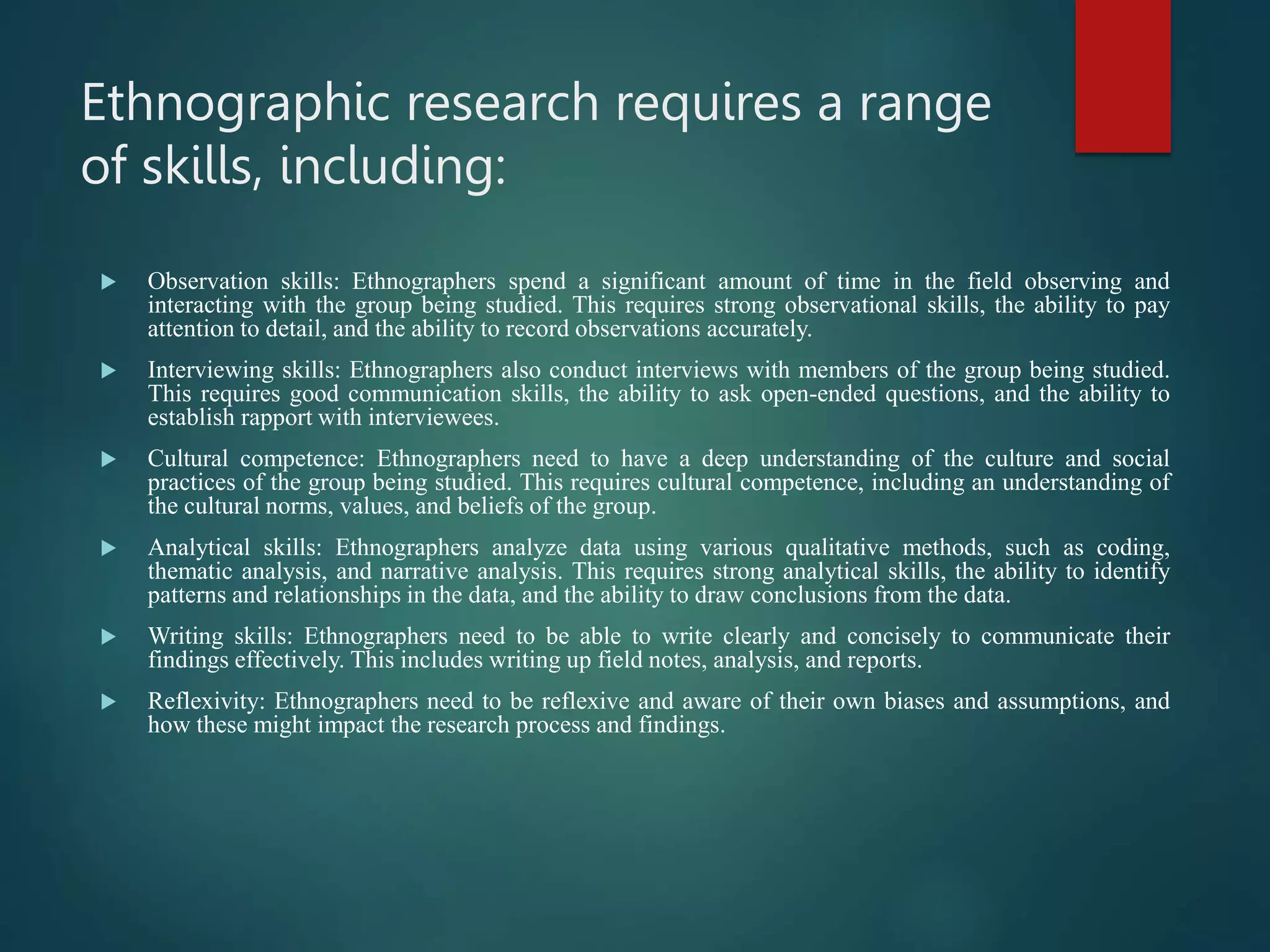Ethnography is a qualitative research method focused on studying people and their cultures through observation and participation. It provides detailed insights into social practices, but comes with limitations such as subjectivity and time requirements. Ethnographic research is commonly used in various fields, including anthropology, marketing, health, and education to understand community dynamics and behaviors.




